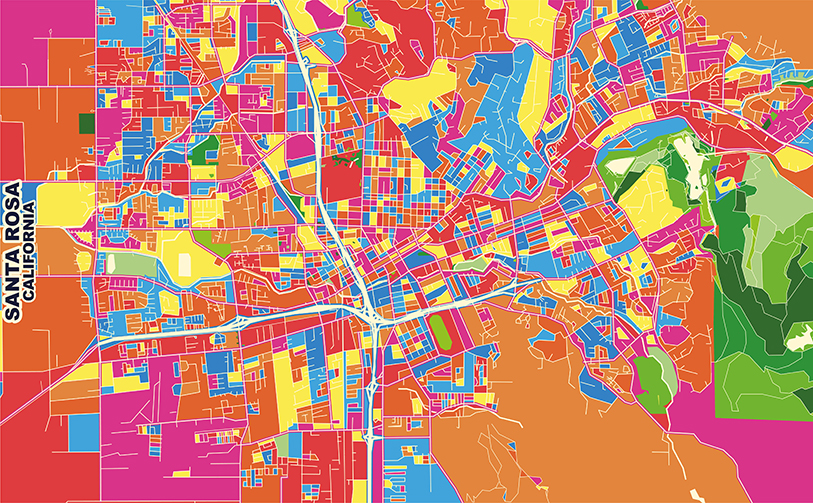On February 2, 2021, Santa Rosa’s City Council adopted a newly revised local urgency ordinance, replacing the initial ordinance that was in place July 7, 2020, through December 31, 2020, and temporarily reinstating COVID-19-related paid sick leave for employees working within Santa Rosa city limits. The new urgency ordinance took effect immediately on February 2, 2021, and will remain in effect through March 31, 2021, or upon expiration of the applicable federal tax credits related to the Families First Coronavirus Response Act (FFCRA), whichever is later.
Covered Employers/Employees
While Santa Rosa’s initial ordinance generally applied to employers with 500 or more employees nationally, and only applied to those with fewer than 500 to the extent the ordinance provided additional protections than the FFCRA, the revised ordinance applies to employers of all sizes.
The ordinance was drafted with the current applicable FFCRA federal tax credits in mind, allowing employers with fewer than 500 employees nationally (who were previously covered by the FFCRA mandate) to seek the tax credit through March 31, 2021 — which also happens to be the current expiration date of Santa Rosa’s ordinance (unless the availability of the federal tax credit is extended).
Under the revised ordinance, one exemption that remains is an employer with fewer than 50 employees that would have qualified for the exemption, under the FFCRA, from providing leave to an employee who needs time off to care for a child due to school or childcare unavailability.
An employee under the ordinance is any person who has worked at least two hours within Santa Rosa city limits for an employer.
Sick Leave Requirement Extended But No Additional Time
Full-time employees are entitled to 80 hours of paid sick leave.
Part-time employees are entitled to sick leave hours equal to the number of hours they work on average over a two-week period.
Notably, Santa Rosa’s urgency ordinance doesn’t provide a new leave bank or add on new time for employees previously covered under the ordinance. The ordinance is simply extending the period for which employees may use any remaining leave.
Covered Uses — Two Applicable Rates of Pay
The covered uses under the revised ordinance have not changed from what was covered under the original ordinance; however, one amendment was that an employee must be unable to work to be eligible for leave. An employee who is unable to work (including telework) for any of the following reasons is eligible for leave:
- Subject to quarantine or isolation by federal, state or local order due to COVID-19;
- Advised by a health care provider to self-quarantine due to COVID-19;
- Experiencing symptoms of COVID-19 and is seeking medical diagnosis;
- Caring for an individual who is quarantined or isolated, or otherwise unable to receive care due to COVID-19; or
- Caring for a minor child because a school or daycare is closed, or the childcare provider is not available due to COVID-19.
The revised ordinance allows employers to deny leave if they can show that the need for an employee’s requested leave is due to the employee’s intentional violation of a health order.
Unlike the original ordinance which made no distinction between an employee caring for themselves or for someone else for purposes of the rate of pay, the revised ordinance includes two separate pay tiers that align with what was used in the FFCRA: Employees using leave for their own purposes are paid their regular rate of pay up to $511 per day (subject to a $5,110 total cap), and employees caring for someone else are paid at two-thirds their regular rate of pay up to $200 per day (subject to a $2,000 total cap).
Offset
The revised ordinance contains the same provision regarding offsets and allows employers that have already provided their employees, on the effective date of the ordinance, with some combination of paid personal leave at least equivalent to the paid sick time required by the ordinance, to offset the ordinance’s requirement. However, the paid personal leave must have been above and beyond what the employer normally provides, and an employer must still comply to the extent that the paid personal leave is deficient in what the ordinance requires.
New Notice Requirement
A new requirement under Santa Rosa’s revised ordinance is that employers must give their employees written notice of their rights regarding sick leave. Notice must be given to all current employees and all new employees within one week of hire.
Employers with employees working in Santa Rosa can learn more about the latest urgency ordinance and access a copy of the city’s written notice (English and Spanish) on Santa Rosa’s website.
Bianca Saad, Employment Law Counsel/Subject Matter Expert, CalChamber
CalChamber members can read more about Santa Rosa’s other local ordinance, Minimum Wage, on HRCalifornia. Not a member? See how CalChamber can help you.







